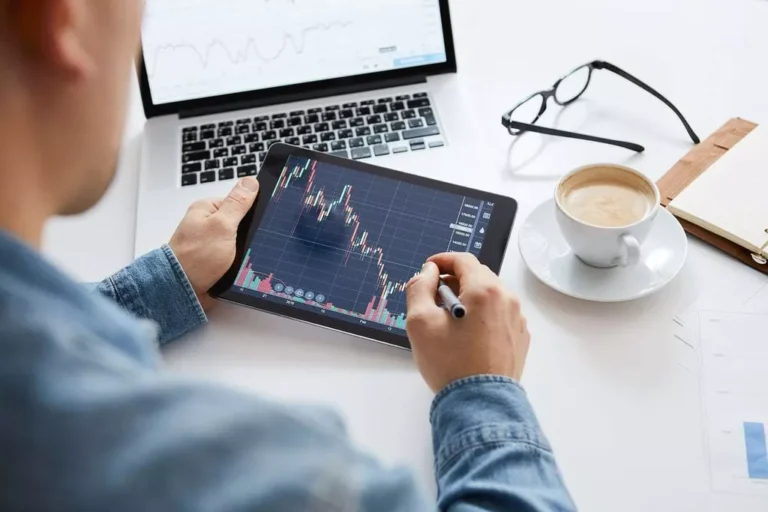The core precept is that the perform’s output stays constant before and after trades, making certain that the steadiness of property within the pool adheres to particular guidelines. The idea of AMMs started to materialize in 2017 when Bancor released a whitepaper introducing a novel pricing mechanism primarily based on bonding curves. Regardless Of its approach, Bancor’s system received criticism for its lack of ability to dynamically adapt to real market situations. Critics highlighted that Bancor’s formulaic pricing, relying solely on token reserves quite than market equilibrium, rendered the protocol susceptible to excessive market events. For occasion, during bank runs or panic selling, Bancor would proceed providing liquidity at costs above zero, whilst market sentiment collapsed, leading to a depletion of its reserves. The fantastic thing about DeFi is that when conducting a token swap on a decentralized crypto exchange (DEX), customers by no means want a particular counterparty or middleman.

Automated market makers (AMMs) are part of https://www.xcritical.com/ the decentralized finance (DeFi) ecosystem. They permit digital property to be traded in a permissionless and computerized way by utilizing liquidity pools somewhat than a traditional market of consumers and sellers. AMM customers provide liquidity swimming pools with crypto tokens, whose costs are decided by a constant mathematical method.
6/ Hybrid formulas incorporate components from different AMM models to optimize for certain trading situations.They provide higher flexibility and higher tailoring to the specific wants of the DEX and its customers Decentralized application. As in any liquidity pool, two tokens (A and B) are concerned; we think about the token swaps as trading pair swaps. The services returned by the automobile wash are synonymous with the swapped tokens, which a specific liquidity pool of the concerned AMM offers in return for the deposits.
Liquidity swimming pools could be optimized for different purposes, and are proving to be an essential instrument within the DeFi ecosystem. An automated market maker (AMM) is an autonomous protocol that decentralized crypto exchanges (DEXs) use to facilitate crypto trades on a blockchain. As An Alternative of buying and selling with a counterparty, AMMs enable customers to trade their digital belongings towards liquidity stored in smart contracts, known as liquidity pools. In summary, automated market makers (AMMs) and decentralized exchanges (DEXs) provide a permissionless, non-custodial alternative to centralized buying and selling platforms.
How Does Amm Work?
Additionally, ‘slippage’ refers to the difference between the anticipated worth of a trade and the executed worth. In extremely unstable markets or swimming pools with low liquidity, slippage can be important, resulting in unfavorable execution costs. As AMM-based liquidity has progressed, we have seen the emergence of hybrid CFMMs that provide greater flexibility and efficiency by integrating options from various AMM models. These superior designs can optimize liquidity management, adjusting threat publicity for LPs while minimizing price influence for traders. CFMMs are the foundational model for AMMs as they launched amm meaning predefined mathematical features that determine the pricing of belongings inside a liquidity pool.

Under sure circumstances, am-AMMs are anticipated to realize higher liquidity equilibrium in comparability with normal fixed-fee AMMs. Whereas its AMM design wasn’t groundbreaking, Solidly’s key innovation lay in its tokenomics—specifically, the introduction of the ve(3,3) mannequin. This mannequin combined Curve’s vote-escrowed token mechanism (veCRV) with OlympusDAO’s game-theoretic (3,3) staking incentives, seeking to align user participation with long-term protocol well being. The core principle is that a trade is valid if the function remains constant earlier than and after the trade. This means the product of the token reserves should stay the identical, adhering to the CPMM model. Bonding Curves describe the relationship between the value of a token and its supply.
Automated Market Maker Platforms
They not solely signify a departure from conventional finance mechanisms on centralized exchanges but also current the longer term trajectory of decentralized transactions in crypto markets. This customization is essential for crypto exchanges, DeFi platforms, and DEXs, where the market’s dynamism and complexity demand extra than just algorithmic predictions. In Distinction To AMMs, which follow pre-set rules, Orcabay’s human-driven insights allow for strategic changes primarily based on rising trends and anomalies. This approach ensures more steady and efficient markets, enhances person belief, and mitigates slippage, in the end benefiting all events within the blockchain ecosystem.
- Liquidity providers (LPs) deposit their property into these swimming pools and are rewarded with a fraction of the fees generated on the AMM.
- One of the preferred fashions adopted by automated market maker platforms is the fixed product market maker (CPMM) mannequin.
- While AMMs come with sure challenges and limitations, their advantages outweigh these issues, making them an important component of the DeFi ecosystem.
- Traders provide liquidity, and are thus often known as liquidity suppliers, while the AMM handles asset pricing based on how much of each token is out there.
- Now that you know how liquidity pools work, let’s understand the character of pricing algorithms.
- Initially designed to allow users to trade digital assets earlier than their itemizing on conventional exchanges, AMMs sought to harness blockchain know-how to facilitate buying and selling and not using a centralised intermediary.
A depeg is a situation in crypto markets whereby a crypto asset that is expected to take care of a predetermine… In the TSMM or Token Swap model, the swapping between two tokens is completed with the assistance of an intermediary token. New to crypto buying and selling and wish to study more before hooking up your wallet via the TabTrader API? The TabTrader Academy has dozens of articles that can answer all your most burning questions. Like everything in DeFi, the area is evolving constantly, with today’s trade already vastly different to the early days of the DEX and the first AMM deployments.
In Distinction To their traditional counterparts on centralized exchanges, automated market makers operate without the dependency on conventional order books. Any one who can use the Internet to buy tokens can turn into a liquidity supplier by supplying tokens to the AMM liquidity pool. Providers sometimes get cash from liquid assets if they provide tokens in pools. In DeFi, AMM refers to algorithms that routinely regulate token costs in liquidity pools. An AMM, or automated market maker, removes the pitfalls that accompany common crypto change trading.
This threat is intrinsic to the AMM model and is more pronounced in swimming pools with highly volatile assets. Past offering steady liquidity and a permissionless setting, there are further layers of benefits that AMMs provide when compared to their conventional market counterparts. Am-AMMs function by conducting censorship-resistant on-chain auctions to nominate a quick lived pool supervisor for a constant-product AMM. The pool supervisor sets the swap charge price and receives the accrued fees from trades. The primary distinction between AMMs and conventional exchanges is the absence of intermediaries.
Even the likes of Uniswap V3 and Bancor have specific mathematical calculations backing their algorithms. There if the amount of X changes within the pool, the quantity of Y may also need to vary in a selected ratio to make sure that the K remains the same. Imagine there is a fish market the place the prices of fish fluctuate relying on demand and provide. If a higher variety of a specific fish floods the market, the availability will increase, pushing the prices down.
How Can The Current Amm Model Be Improved?
The platform offers a spread of liquidity swimming pools for customers to earn rewards in CAKE tokens. It contrasts Orcabay’s human-driven market making strategies with the algorithmic approach of AMMs, emphasizing the benefits of adaptability and real-time responses to market modifications. This normally leaves liquidity suppliers with momentary losses, especially in periods when dramatic market modifications occur. Automated Market Makers are protocols primarily based on decentralized buying and selling swimming pools that permit users present liquidity directly to markets allowing others to buy or promote tokens.
AMMs could expertise slippage and worth impression, particularly for larger trades. Slippage refers to the difference between the anticipated value and the executed worth of a commerce. As AMMs rely on mathematical formulas to discover out prices, massive trades can cause significant worth impact, resulting in greater slippage.


评论